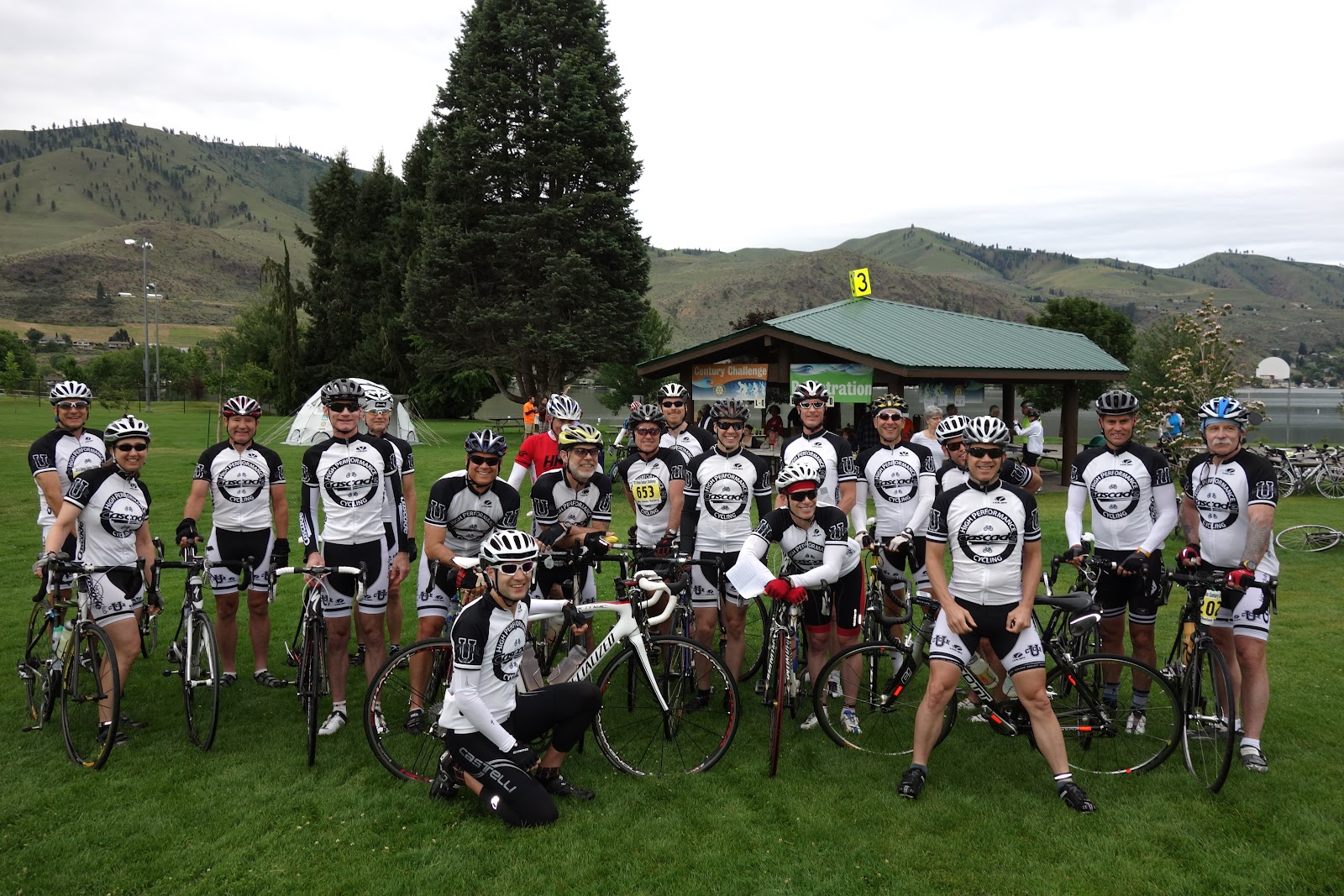Steve Hulsman was tragically killed in a collision with an automobile on December 21st. https://www.seattlebikeblog.com/2023/12/23/man-killed-while-biking-in-west-seattle-identified-as-steven-hulsman/ Update https://www.seattlebikeblog.com/2024/01/19/police-person-who-killed-steve-hulsman-was-driving-with-a-suspended-license/
I think about Steve every time I ride, and often when not on the bike.
I first met Steve around 2006 when he started to show up for the Hills of the West Coast ride that I had started in 2003. After coming on the ride for a while he began to unofficially help me keep the ride organized. Back then we were getting up to 35 riders, so his efforts were much appreciated! Eventually, we talked about him becoming a Cascade Bicycle Club Ride Leader. I don’t remember if he asked about becoming a ride leader, or if I suggested it, but I still remember the day we discussed it. Of course I encouraged him, and I became his Cascade Ride Leader mentor. He led the HOWC several times as part of the check ride process.
After moving to Issaquah at the end of 2010, I continued to lead the HOWC with a start at Tibbets Park. Although Steve lived in West Seattle, he still made a lot of the rides. I was quickly becoming addicted to mountain biking, and after ten years of leading the HOWC I was losing interest in leading it. I suggested that Steve start leading the ride and he eagerly agreed.
I went back through my cycling blog to read comments I had made about Steve. I thought I would share some of the words that for me really describe what Steve was all about. He was totally unselfish, and incredibly generous with a constantly positive attitude. That is what I will remember about him. That, and the fact that he never hesitated to go to the front and help out the group, no matter how long the ride, or how tired he might be. Steve had class. Steve (kneeling) at the Chelan Century.
From 11-14-09 https://tomsbicycleblog.blogspot.com/2009/11/11-14-09-hills-of-west-coast.html
Jeff led the ride today, but the true protagonist was Steve H., who went to the front and picked up the pace anytime we got a little too chatty. Warren was game as always to ride hard, but it was Steve who drove the ride. Rolling home up Lake Washington north of Seward Park, Steve was at it again. Since he had done so much work on the front already, we encouraged him to finish it out and pull all the way to the hill leading to the I-90 tunnel overlook.
Steve’s almost always willing to sacrifice himself for the good of the group, and he said, “Sure, but you guys will just drop me on the hill.” To which I replied, “Don’t worry about that. We’ll make a deal with you—you do the pulling and we will ride up the hill with you.” A quick consensus formed that this was indeed a great strategy late in the ride. When we got to the hill, Steve just kept the hammer down, and no concession needed to be made. We did ride up the hill with Steve, but not at an “I’m cooked” pace. Steve third from left with me standing on his left.
From 5-2-10: https://tomsbicycleblog.blogspot.com/2010/05/522010-howc-ride-report-soldier-of-day.html
As I mentioned, I will be adding a new category to the header of this blog called “Soldier(s) of the Day.” Rather than publish the score of which riders climbed the fastest, I’ll be listing the riders who stood out by unselfishly helping on the ride. Today that was Steve Hulsman, just as it often is. Steve is always eager to jump on the front. So eager, as a matter of fact, that late in today’s ride, I would ride up around him to give him a break and inevitably, he would ride alongside of me instead of on my wheel. Maybe Steve subscribes to the triathlete in training mantra of, “You may share my wind, but you may not take my wind?” Seriously, Steve did spend time not on the front, but he was up there a lot. Given the amount of climbing we did today, there were not a lot of bona fide paceline opportunities, but for me that just made it even more obvious as to how much Steve was helping out.
From 5-9-10: https://tomsbicycleblog.blogspot.com/2010/05/5-9-2010-hills-of-west-coast-mothers.html
Last week’s Soldier became this week’s General. Steve led the ride to meet part of the requirements to become a Ride Leader for Cascade Bicycle Club, and he did a great job. Of course, having a group of experienced riders never hurts and we had another great group today. Steve did a nice job with the pre-ride safety talk, and as always, emphasis was placed on emphatically pointing out hazards to the riders behind you. Steve’s comment on the post read, “Thanks again Tom. That's quite a promotion in just one week. I'm afraid of what it will be next week... ;o)”
From 5-1-11: https://tomsbicycleblog.blogspot.com/2011/05/miles-61.html
Soldier of the Day: N/A as we mostly shared the front (but Steve H. gets a big honorable mention for singlehandedly pulling the group at the end of the ride from Cedar Grove Road all the way to Tibbets)
From 6-12-11 https://tomsbicycleblog.blogspot.com/2011/06/metal-cowboys-its-not-about-bikeat-all.html
Soldier of the Day: Steve H for showing up and riding hard (4:40 Flying Wheels 100 yesterday and 70m more at a 20mph average speed today. Steve spent more time on the front than a lot of us, including me)
It’s ironic that I returned to leading HOWC rides from Issaquah in the summer of 2023, while Steve continued to lead HOWC rides from Seattle. I plan on leading more HOWC rides starting in the spring, and for sure, I will be thinking of Steve.

